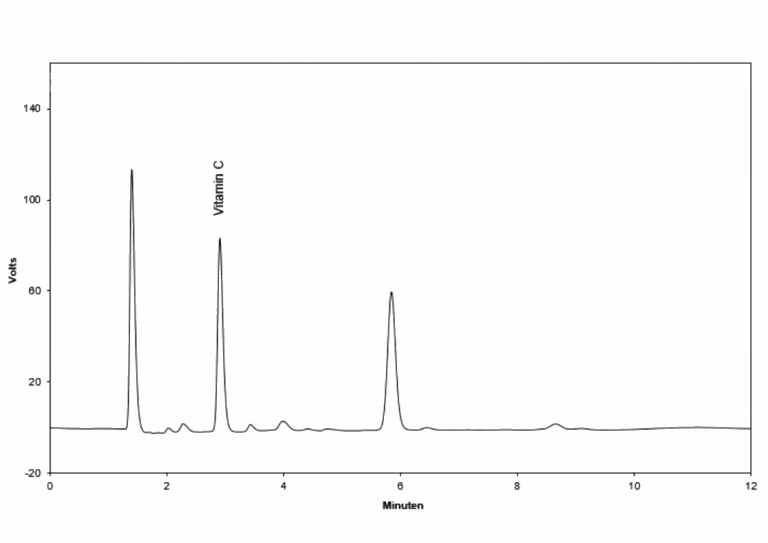Vitamin C
The disease, which is called “scorbut” was known already 1550 a. Chr. The symptoms were known also by greeks and romans. In the 15th to 17th century more sailors died of scorbut than of any other circumstances. The food provided on board contained nearly no vitamin C containing goods. In the 16th century the importance of Vitamin C in healing scorbut was discovered.
Vitamin C is a strong reducing agent. The oxidation of Vitamin C leads to dehydroascorbic acid via a radicalic intermediate, in vivo. The three forms constitute a reversible redox-system.
The most important function of ascorbic acid is the catalization in the biosynthesis of collagen. It is important for the de novo synthesis of bone, cartilage and teeth and wound healing. Vitamin C is needed for the synthesis of noradrenalin. Vitamin C plays an important role as antioxidant. It protects other molecules and cell structures from free radicals and reactive oxygen species. Ascorbic acid promotes the resorption of iron in the intestine and reduces the production of nitrosamines which might be carcinogenic.
An acute lack of vitamin C not always manifest as a classical Skorbut. The primary signs of a lack of Vitamin C are: tiredness, physical and mental weakness and increased susceptibility for infections. Psychic disturbances like depressions or hysteria are possible.
Technical data
Sample Li heparinate plasma
Sample volume 200 µl
Detector UV 254 nm
Method isocratic
Determinations 100
Ordering Information
IC2900 Testkit
IC2900ko Controls (2 level each 250 µl lyoph.)
IC2900rp HPLC column

Principle of the method
For the determination of vitamin C a precipitation step, which remouves high molecular substances is performed first. After centrifugation the supernatant is injected into the HPLC system.
The isocratic separation via HPLC at 30°C using a „reversed phase“ column. One run lasts 12 minutes. The chromatograms are recorded by a UV-detector. The quantification is performed by the delivered plasma calibrator; the concentration is calculated via integration of the peak areas, resp. peak heights.